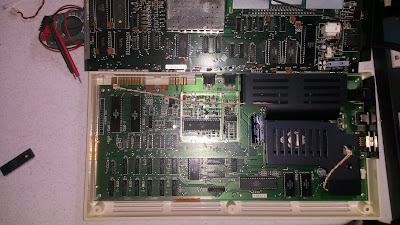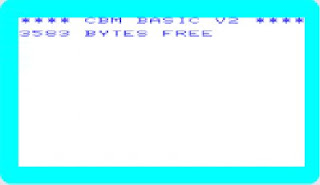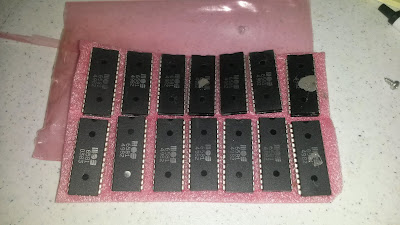Most of them have scuffed cases, missing keys, boards covered in rust, and didn't boot at all. I figured I would go through some of them to see if I can scrounge some working parts. I also pulled out a few reference working VIC boards to do the testing against. These are pictured below.
In the course of testing the various 6560 VIC-I chips (the video chip that the computer takes its name from), I made an amusing discovery.
The discovery was that, even in the exact same board, different VIC-I chips produce different tints in their basic colors. This is something I expect from TVs and Monitors which, after all, have a Tint knob. But from a digital component deterministically manufactured? A shock! I'm sure many of you olde VIC fans already knew this, but I'm still fairly new to this computer, compared to some of the other Commodores, so it was a surprise.
Below are some of the colors I observed. ++NOTE: these images were snagged off the net for illustration purposes only...
Another amusing discovery was how resilient the VIC-I chip is. Even on the worst condition boards, where CPUs, VIAs, and ROM chips had all met their doom, not a single solitary VIC-I was defective. :)
While I was working on this, I made the sad discovery that the 6581 SID (sound) chip in my main breadbox Commodore 64 had gone silent. In my experience, when a SID goes bad, it goes All The Way BAD. And that's what happened to me. A replacement was necessary.
I have a nice selection of pull-spares in my parts cabinet, so I wasn't worried. But I decided to dig into a sealed bag of SIDs I purchased off eBay 7-8 years ago. They were sold as a group, and most appear to come from the same manufacturing batch. All the chips were pushed into a pin-protection mat, and the static-bag was still unopened. I cut the bag open and began testing them. You can still see some thermo-compound on some of them -- that's my doing; they were pristinely clean with perfectly straight pins when I opened it.
I was shocked to discover that the first chip I put in did not work correctly. I was even MORE surprised at the WAY it did not work. As I mentioned above, when a SID goes bad, it goes All The Way. But this chip was not silent, but FLAWED; it did not sound right.
Moreover, as I tested the chips one after another, I discovered that the same was true of all the chips. Each one made sound, but the wrong sounds. Some had missing voices. Some had loud noisy interference. Some had broken waveform generators. None were all the way broken, but all were flawed. I was robbed, and robbed in a way I didn't expect. Were these manufacturing defects I purchased? Pulls of flawed chips from an old repair shop? Who knows. Watch the video below to see what I found.
So, in the end, I had to dig into my working pulls, and my beloved breadbox now has its voice back.







